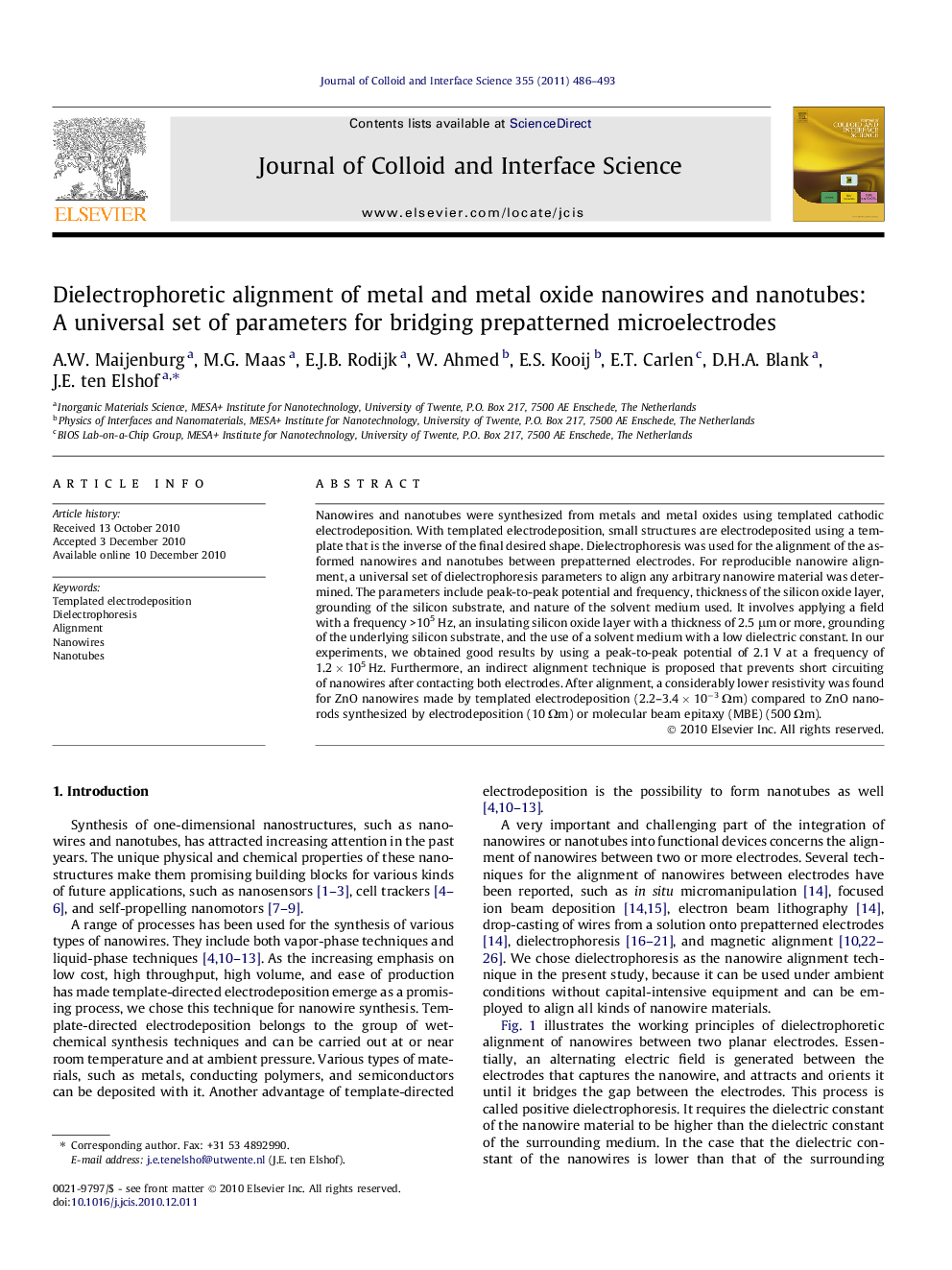| Article ID | Journal | Published Year | Pages | File Type |
|---|---|---|---|---|
| 609084 | Journal of Colloid and Interface Science | 2011 | 8 Pages |
Nanowires and nanotubes were synthesized from metals and metal oxides using templated cathodic electrodeposition. With templated electrodeposition, small structures are electrodeposited using a template that is the inverse of the final desired shape. Dielectrophoresis was used for the alignment of the as-formed nanowires and nanotubes between prepatterned electrodes. For reproducible nanowire alignment, a universal set of dielectrophoresis parameters to align any arbitrary nanowire material was determined. The parameters include peak-to-peak potential and frequency, thickness of the silicon oxide layer, grounding of the silicon substrate, and nature of the solvent medium used. It involves applying a field with a frequency >105 Hz, an insulating silicon oxide layer with a thickness of 2.5 μm or more, grounding of the underlying silicon substrate, and the use of a solvent medium with a low dielectric constant. In our experiments, we obtained good results by using a peak-to-peak potential of 2.1 V at a frequency of 1.2 × 105 Hz. Furthermore, an indirect alignment technique is proposed that prevents short circuiting of nanowires after contacting both electrodes. After alignment, a considerably lower resistivity was found for ZnO nanowires made by templated electrodeposition (2.2–3.4 × 10−3 Ωm) compared to ZnO nanorods synthesized by electrodeposition (10 Ωm) or molecular beam epitaxy (MBE) (500 Ωm).
Graphical abstractDielectrophoresis is used for the alignment of metal and metal oxide nanowires and nanotubes between prepatterned microelectrodes.Figure optionsDownload full-size imageDownload high-quality image (59 K)Download as PowerPoint slideResearch highlights► Universal set of parameters for dielectrophoretic alignment. ► Indirect alignment technique to prevent short circuiting after alignment. ► Low resistivity found for ZnO nanowire, indicating good ohmic contact.
